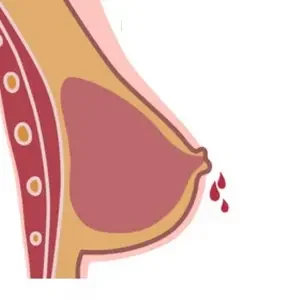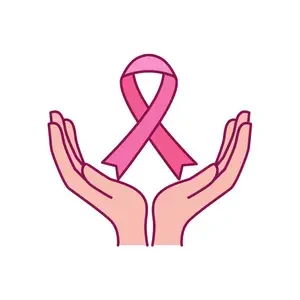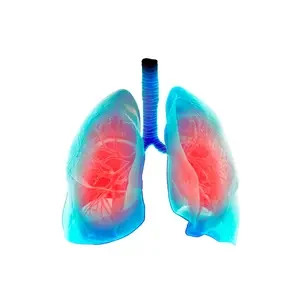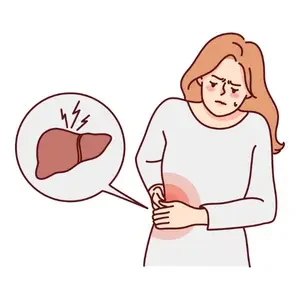Breast Cancer
Breast cancer is a type of cancer that starts in the cells of the breast. It can occur in both men and women but is more common in women. Symptoms include a lump or thickening in the breast, changes in size or shape, skin dimpling, nipple discharge, and redness/scaliness of the nipple or breast.
Breast Cancer Survival Rate 2023
Estimated number of new cases in 2023, World, both sexes, all ages
No Data Found
Estimated number of death cases in 2023, World, both sexes, all ages
No Data Found
Breast Cancer Treatment Options
The treatment of Breast Cancer is customized as per each patient’s unique molecular profile. It is very different from a few years ago, when it was believed that ‘one size fits all’, and all breast cancer patients received the same treatment. In today’s time, 2 patients of the same age with breast cancer may receive completely different treatments for their cancers.
The primary factors that determine the treatment are:
- The extent of the disease at the time of diagnosis, is it localised or metastatic.
- The histopathology and the molecular profile of the cancer, which means- is it invasive ductal carcinoma or lobular carcinoma or any other type like a medullary cancer. What is the ER/PR/HER2 status, & the KI-67 ( the cancer cell proliferation rate).
- The grade of the cancer, is it low grade or high grade.
- The age of the patient, younger patients would generally require more intensive treatment then an older lady.
- The physical condition of the patient. Is the person in good health or very weak.
- Is the breast cancer related to an underlying, high risk, hereditary disease-causing mutation like BRCA1 & BRCA2.
- Is there a family history of breast or ovarian cancer.
- Is there lymphovascular invasion on the pathology or biopsy specimen, its presence means a more aggressive cancer.
Breast Cancer Surgery
There are two types of surgical treatments usually recommended.
Lumpectomy with an Axillary Lymph Node Dissection, where the cancer lump is removed along with a lymph node dissection, but the breast is preserved. Modified Radical Mastectomy, where the entire breast is removed along with removal of the draining axillary lymph nodes.


Chemotherapy for Breast Cancer
This is usually required in breast cancers larger than 0.5cm. It can be safely omitted only in low grade cancers and in extremely small cancers. All cancers where the axillary lymph nodes are involved with the cancer usually require chemotherapy.
In some breast cancers which are HER2 negative but ER/PR positive, with 1 to 3 positive axillary nodes, can undergo a molecular profiling using a test like Mammaprint or Oncotype DX to determine whether chemotherapy can be safely omitted. This applies only to hormonal positive cancers. All others require chemotherapy.


The ER/PR/HER2 status determines the chemotherapy regimen to be used , the number of cycles needed, and whether the chemotherapy should be given before or after surgery. If the cancer is ER/PR/HER2 negative ( triple negative),
- ER/PR/HER 2 Positive,
- or HER2 positive, ER/PR negative,
- then the chemotherapy must be given as the first treatment, before surgery. All cycles must be completed, then surgery must be performed.
- International studies have clearly shown that earlier chemotherapy in these patients improves the cure rate and greatly reduces the chances of a recurrence.
Regimens Used:
Drugs used in the initial chemotherapy regimen in both localised and advanced cancer are- Adriamycin/Doxorubicin, Cyclophosphamide, Docetaxel and Paclitaxel.
4 cycles AC (Adriamycin with Cyclophosphamide) followed by Taxanes, either 4 cycles of Docetaxel or 12 weekly doses of Paclitaxel is the primary chemotherapy regimen administered, either pre or post-surgery or in stage 4 cancers.
In young women, chemotherapy is given on a dose-dense schedule every 15 days, with treatment being completed in 4 months. This improves the survival rate by 20-30% in younger women with an aggressive cancer, who are at a higher risk of recurrence.
All other women receive the chemotherapy at 21-day intervals for a total of 8 cycles.
In HER2 positive breast cancers, targeted therapy to neutralize HER2 is added to the chemotherapy regimen. The drugs used are Trastuzumab and Pertuzumab, with the anti-HER2 treatment continuing for a total period of 1 year.
In ER/PR positive cancers, maintenance treatment is given after surgery and chemotherapy, using targeted therapy in the form of oral tablets- Letrozole and Tamoxifen. These tablets neutralize the excessive hormonal stimulation that drives the breast cancer in these patients.
In stage 4 or advanced breast cancer patients, who are ER/PR positive, oral treatment is possible instead of chemotherapy, using Letrozole or Tamoxifen in combination with a cancer cell cycle inhibitor- Palbociclib or Ribociclib.
In ER/PR/HER2 negative or triple negative cancers, additional drugs are added to the primary chemotherapy regimen to achieve a better response. These are Carboplatin (a platinum) added to the Taxanes. Oral Capecitabine tablets are given if viable cancer is found post chemotherapy, on surgery, in the pathology specimen.
Triple negative cancers which show extensive spread generally respond well to chemotherapy. A fraction of them show PDL1 positivity. These cancers can be treated using Immunotherapy, namely Pembrolizumab or Nivolumab.
Triple negative cancers are also found to be associated with the BRCA mutations, the PARP inhibitors can be used in these cancers, either as maintenance in localised cancers at a risk for recurrence, or in stage 4 cancers as treatment.
Chemotherapy drugs used in second- and third-line treatment of recurrent or relapsed breast cancers are Gemcitabine, Nab-Paclitaxel, Platinums, Vinorelbine and Eribulin. A targeted therapy like Bevacizumab can also be added to the chemotherapy for a better response.
All breast cancers localised to the breast and the axillary lymph nodes will usually require chemotherapy, surgery and radiation for a cure. The size of the cancer, ER/PR/HER2 status and the lymph node involvement will determine the sequence of the treatment given, and the need for radiation.
All cancers which show spread beyond the breast into the bones, liver, lungs or brain are stage 4 cancers. They cannot be cured but can be effectively controlled with chemotherapy. They must undergo molecular profiling to determine treatment options in addition to chemotherapy.
The presence of BRCA mutations allows the use of PARP inhibitors for treatment.
Radiation Therapy in Breast Cancer
Is given post-surgery and chemotherapy in patients with cancers localized to the breast and axillary lymph nodes.
It is required in all women who undergo a lumpectomy.
The affected breast is radiated to avoid the risk of a recurrence.
It is also required in all patients with more then 3 axillary lymph nodes found positive with cancer on surgery, irrespective of whether the breast is removed or preserved.
All large breast cancers and all locally advanced cancers require radiation post-surgery and chemotherapy.
Radiation is also given as palliation in stage 4 breast cancers:
To relieve the pain in case of bone metastases,
To treat a spread into the brain- radiation to the brain is then given,
To treat a breast mass which is bleeding and has eroded the overlying skin to produce extensive ulceration of the breast surface.
3 Major Types of Breast Cancers
Ductal Carcinoma in situ (DCIS)
A non-invasive type of breast cancer that starts in the milk ducts.
Invasive Lobular Carcinoma (ILC)
A type of breast cancer that starts in the milk-producing glands (lobules), and can spread to other parts of the body in advanced disease.
Invasive Ductal Carcinoma (IDC)
The most common type of breast cancer, which starts in the milk ducts, and has the potential to spread to other parts of the body.
Breast Cancer in Men
Breast cancer in men is rare, but can occur. The symptoms are similar to those in women and can include a lump or thickening in the breast, changes in size or shape, skin dimpling, nipple discharge, and redness/scaliness of the nipple or breast skin.
Risk factors include age, family history, exposure to estrogen, and conditions such as Klinefelter syndrome. Treatment options include surgery, radiation therapy, chemotherapy, and hormonal therapy, and the specific plan depends on the type and stage of the cancer, as well as the patient’s overall health.
Early detection and treatment are important for increasing the chances of successful outcomes.


Our Survival Stories
Do you see any symptoms?
Breast Cancer in Young Women
In recent years, the incidence of breast cancer in young women has risen, with women as young as 25-26 being diagnosed with advanced stages of the disease. This is due to several factors, including the fact that breast cancer in young women is often more aggressive and rapidly spreading than in older women.
Molecular profiling of breast cancer in young women often shows a triple-negative phenotype, which is associated with high-risk, hereditary mutations such as BRCA1 and BRCA2.
Other hereditary, high-risk mutations that can cause breast cancer in young women include ATM, CHEK2, PTEN, and PALB2. When a young woman is diagnosed with breast cancer, it is important for her to undergo a mutation test to determine if she has any of these mutations.
This information can help tailor treatment and reduce the risk of developing other cancers, such as ovarian or uterine cancer. However, many young women delay seeking medical attention for breast cancer symptoms, leading to delayed diagnoses and more advanced stages of the disease.
With appropriate treatment and early detection, breast cancer in young women can be effectively treated and cured.


Read about other cancers in women: Ovarian Cancer
Reducing Risk Of Breast Cancer


Regular, yearly screening for breast cancer starting at age 40 is the most effective way to reduce the risk.


Screening should begin at age 40, regardless of family history.


Self-examination and regular physician check-ups are essential for all women.


Women with high-risk mutations (BRCA1 & 2) should start screening 10 years prior to age of diagnosis of affected family member or at age 25 if no family history.


Women carrying high-risk mutations should start annual breast MRI at age 25 and annual mammogram at age 30, with clinical breast examination every 6 months.


Women with no mutations but a family history of breast or ovarian cancer should start yearly mammograms at age 40 and continue for life.
Breast Cancer Early Detection and Diagnosis
Early detection of Breast Cancer is possible if regular, yearly screening is carried out in all women, once they turn 40. This should be accompanied by a clinical breast examination every 6 months by a physician/ medical oncologist. Regular self-breast examination by every woman is also essential.
This process must be followed even if there is no family history of cancer. For those having a first or a second degree relative with breast, ovarian or uterus cancer, the above screening procedures are essential and can prove to be lifesaving. They enable an early detection and diagnosis of breast cancer at a point when it is extremely small.
The new digital Mammograms can detect a cancer as tiny as 1mm in size. Surgical removal of this area may then be the only procedure needed for a cure.Women with a number of first/second degree relatives affected with breast, ovarian or uterine cancers, especially those below 50, must be screened for the presence of the hereditary, high risk breast and ovarian cancer causing mutations, with BRCA1 & 2 being the commonest detected.
Women with these mutations must begin screening for breast cancer at an age 10 years earlier than the age at which the youngest affected relative was diagnosed.
This screening must consist of self-breast exam and clinical examination by an oncologist.
Breast MRI must be done yearly starting from age 25, followed by a yearly breast Mammogram starting at age 30.
Once a cancer is suspected on the Mammogram, a USG guided biopsy must be performed for diagnosis. Appropriate treatment must then be initiated as soon as the diagnosis is made.
Do You Need a Mammogram in Mumbai?
Breast Cancer Signs and Symptoms


Lump in Breast
Breast cancer is often found by chance as a hard lump in the breast or armpit, there is no pain in the early stages.


Bleeding from Nipple
Bleeding from the nipple can occur when there is a breast lump involving the nipple.


Progression
Cancer progression causes nipple changes, hard, fixed lumps, and dimpled skin (Peau d’ orange appearance) of the breast.


Lung involvement
Cough, breathlessness, and pleural effusion are seen in the advanced stages.


Jaundice
Jaundice is seen with liver involvement.


Loss of Appetite
Weight loss, weakness, and fatigue occur in metastatic breast cancer.
Survival Rate of Breast Cancer in India
Stage of diagnosis: The survival rate of breast cancer in India is higher when the cancer is detected at an early stage. The 5-year survival rate for women with localized breast cancer is around 85%.
Access to quality treatment: The availability and quality of treatment play a significant role in determining the survival rate of breast cancer in India. Women with access to advanced medical facilities and technology tend to have higher survival rates.
Overall health of the patient: The overall health of the patient, including their age, lifestyle, and comorbidities, can affect their ability to cope with treatment and can impact the survival rate of breast cancer in India.
Type of breast cancer: The type of breast cancer and its aggressiveness can also affect the survival rate. For example, some types of breast cancer grow and spread more quickly than others.
It is important to keep in mind that these are general estimates and individual experiences can vary widely. It is best to consult a doctor for a personalized prognosis.
Breast Self Exam
It is essential for all women to understand that breast self-examination cannot be a replacement for clinical examination by a Medical Oncologist and a Mammogram. These screening procedures must still be followed at the designated intervals.
Breast Self-Exam: Quick Steps
- Choose an appropriate time to do self-breast examination, ideally a week after the end of the menstrual cycle when the breasts are not tender and swollen.
- Perform a visual inspection in front of a mirror, with the arms by the side and without a shirt or bra.
- Check both breasts for any changes in the skin or nipples, visible swelling, unevenness, asymmetry, nipple retraction, or inversion.
- Repeat the same examination with both hands pressed down on the hips, and then with both arms raised overhead with both palms firmly pressed together.
- Inspect the underside of the breasts by lifting them.
- Perform a physical examination, either lying down or in the shower using soap to make the skin smoother.
- Use the pads of the middle three fingers or palms, not finger tips, to examine each breast carefully and systematically, applying adequate pressure to detect deep-seated lumps.
- Examine both armpits for any swelling or lumps.
- Follow up immediately with a visit to a Medical Oncologist if any abnormality is detected.
Frequently Asked Questions
Cancer that arises from within or any part of the breast is known as breast cancer. It can arise from the breast ducts, lobules, the nipple etc.
Breast cancer risk is elevated when it runs in families, especially with an affected first- or second-degree relative like a mother or sister. The risk also increases with age. High-risk mutations like BRCA1 & 2 cause hereditary breast cancer to develop at a younger age. A history of ovarian or uterine cancer in the family increases the risk of breast cancer.
Chemotherapy is required for various stages of breast cancer. When the size is larger than 0.5cm to 1cm, when the cancer is locally advanced and has spread in to the surrounding tissue, when axillary lymph nodes are involved, and when microscopic spread of cancer cells is seen post-surgery, chemotherapy is necessary. In stage 4 breast cancer, chemotherapy is typically given. For HER2 positive or ER/PR/HER2 negative (triple negative) breast cancer, chemotherapy is also required.
If untreated, breast can spread rapidly, over a few months to a year, and eventually prove fatal.
No, only the breast with cancer needs treatment. The opposite breast is not touched.
The most common type of breast cancer is Infiltrating Ductal Carcinoma. Other less frequent types include Invasive Lobular, Mucinous/Colloid, Medullary, Tubular, Papillary, & Paget’s Disease. Rarely, sarcomas & lymphomas can also occur. Ductal & Lobular carcinoma-in-situ are early, localized breast cancers.
Usually 6 to 8 cycles of chemotherapy are given for breast cancer, at 21 day intervals. Dose dense chemotherapy is given at 15-day intervals for 8 cycles. A part of some chemotherapy protocols includes weekly Paclitaxel for 12 cycles.
For a definitive diagnosis of breast cancer, a Mammogram followed by a biopsy of the breast lump is needed. A breast self-examination can be done at home, a week after every period, to check for any suspicious breast lumps or swellings.
Yes, breast cancer can be cured completely if detected early, before it spreads, and treated appropriately.
Breast cancer can be treated with complete breast removal or by performing a lumpectomy, where only the cancerous lump is removed and the breast is preserved.
About Dr. Sujata Vasani
Dr. Sujata Vasani is a Hemato-Oncologist with 18+ years of experience in her field. She currently has her own clinic at Kemps Corner and is an Honorary Consultant at these renowned hospitals – Saifee, Breach Candy, Bhatia, Cumballa, and Dalvi.
Require a Breast Cancer Medical Diagnosis?
Patient Case Studies
Case studies provide valuable insights into the treatment and management of individual cancer patients, informing oncologists’ decision-making and helping to improve care and outcomes for all patients. They also inform clinical guidelines and best practices, benefiting all cancer patients
Testimonials
A Leading Breast Cancer clinic in Mumbai
Take the first step towards better treatment by reaching out to the expert team at Dr. Sujata's Breast Cancer clinic in Mumbai. Schedule a consultation today!



